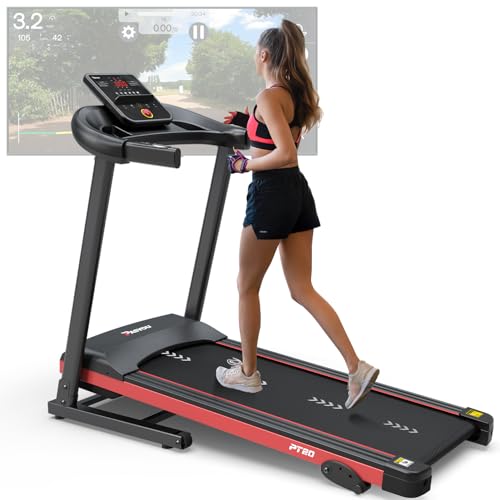The Rise of Non-Powered Treadmills: A Deep Dive into Their Benefits and Features
In a world increasingly focused on health, health, and fitness, the choices for exercise equipment appear endless. Amongst these, non-powered treadmills are acquiring significant traction. These makers, which do not count on electrical power to operate, use an unique blend of advantages and advantages that cater to a diverse audience. This article checks out the features, benefits, and considerations associated with non-powered treadmills, while also addressing common questions surrounding them.
What is a Non-Powered Treadmill?
A non-powered treadmill, typically referred to as a manual treadmill, is a type of treadmill that is run by the user's motion instead of an electric motor. Users power the belt forward by walking or running, making it a flexible alternative for cardio exercises. Non-powered treadmills are typically seen in home gyms, physical fitness studios, and rehab centers due to their simplicity and efficiency.
Contrast: Non-Powered vs. Powered Treadmills
To understand the growing popularity of non-powered treadmills, it's important to compare them against their powered counterparts. The table listed below highlights some essential differences:
| Feature | Non-Powered Treadmill | Powered Treadmill |
|---|---|---|
| Source of power | Manual (user-driven) | Electric (motor-driven) |
| Cost | Usually more inexpensive | Often more costly |
| Upkeep | Low maintenance needs | Higher maintenance requirements |
| Space Requirements | Usually less large | Can be large and heavy |
| Incline Adjustment | Manual adjustments | Automatic settings offered |
| Exercise Intensity | Variable; depends on user effort | Constant; speeds set by the user |
| Threat of Injury | Lower, promotes natural movement | Greater, due to speed settings |
Training Benefits of Non-Powered Treadmills
- Engagement of Core Muscles: Non-powered treadmills necessitate a greater level of balance and core engagement. Users must stabilize themselves, which in turn includes core strength into the exercise.
- Natural Running Mechanics: As users move the tread, they mimic natural running or walking methods, decreasing the risks of injury associated with hectic powered treadmills.
- Personalized Speed and Intensity: Because the treadmill depends on user effort, individuals can select their exercise pace, making it ideal for both newbies and advanced athletes.
- Increased Caloric Burn: Research indicates that users may burn more calories on a non-powered treadmill compared to a powered one at similar intensities. The factor? Manual treadmills can push the body to work harder and to maintain a greater level of intensity throughout the workout.
- Toughness: Non-powered treadmills are generally more rugged and developed to last, with fewer electronic parts that might stop working in time.
Considerations for Choosing a Non-Powered Treadmill
Before purchasing, potential buyers need to think about the following functions:
| Feature | Considerations |
|---|---|
| Weight Limit | Ensure it fits your physique and needs |
| Belt Size | A larger belt can offer more convenience, particularly for running |
| Incline Settings | Look for options to change incline for differing exercise strength |
| Frame Construction | Go with resilient materials that can hold up against strenuous usage |
| Mobility | Think about models that are simple to move or keep out of the way |
Often Asked Questions (FAQ)
1. Are non-powered treadmills suitable for everybody?Yes, these treadmills are typically ideal for users of all fitness levels. However, Self Powered Treadmill Uk with specific health concerns need to seek advice from a physician before beginning any new workout program.
2. How much do non-powered treadmills cost?Rates can vary extensively, normally varying from ₤ 200 to upwards of ₤ 2,000 based upon quality and features. Manual alternatives tend to be more cost effective than powered versions.
3. How do I preserve a non-powered treadmill?Upkeep tends to be very little; merely make sure that the belt is clean and look for wear and tear occasionally. It's also important to keep moving parts oiled for smooth operation.
4. Can I run or walk on a non-powered treadmill?Yes, non-powered treadmills are developed for both walking and running. Users can adjust their exercise strength based upon speed and stride.
5. Do I need to adjust the incline by hand?Yes, the majority of non-powered treadmills need manual adjustments for incline changes, enabling users to vary their exercises as preferred.
The non-powered treadmill stands as a practical and effective exercise solution, perfect for those wanting to enhance their workout routine without the complexities of powered machines. By providing an extensive exercise that engages the core and works the body holistically, these treadmills are designed to produce a reliable cardio experience that deals with all fitness levels. Their affordability, sturdiness, and general effectiveness for calorie burning contribute to their rise in appeal.
Whether you are an experienced athlete looking for a tougher workout or a beginner taking those initial steps towards physical fitness, non-powered treadmills provide an inviting alternative to the conventional electric treadmill. With the included benefit of lower maintenance and cost, they are worthy of factor to consider on your fitness journey.

